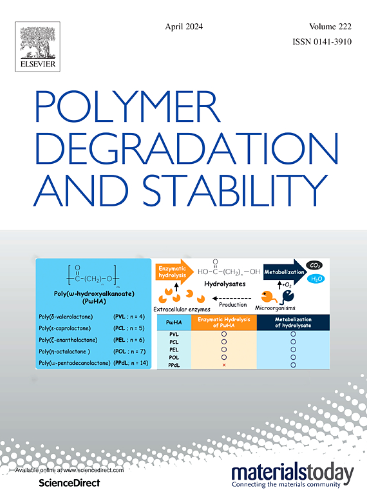Enhancing stability: The protective role of nanodiamonds against biodegradation in cellulose ethers dispersions
IF 6.3
2区 化学
Q1 POLYMER SCIENCE
引用次数: 0
Abstract
This study investigates the effect of detonation nanodiamonds (DND) in preserving cellulose dispersions, specifically hydroxyethyl cellulose (HEC) and hydroxypropyl cellulose (HPC) solutions, by analyzing their rheological behavior, chemical-physical properties, and degradation resistance. HEC and HPC are widely used cellulose ethers with thickening, stabilizing, and water-retaining properties, making them valuable in cosmetics, electronics, pharmaceuticals, and other industries. However, these polymers degrade under harsh conditions and are prone to microbial contamination in aqueous systems. The results demonstrate that incorporating DND into cellulose ether formulations significantly enhances their stability and reduces biodegradation risks. Viscosity measurements show slower depolymerization rates in DND-containing dispersions, indicating a longer shelf life than pure HEC or HPC solutions. Additionally, pH fluctuations are more controlled in composites, with a maximum variation of only 1 pH unit compared to 2.5 units in standard solutions, suggesting improved chemical stability. Conductivity changes due to degradation are minimal in DND formulations, indicating reduced breakdown over time. Notably, microbial growth is drastically reduced in DND composites.
These findings highlight DND's role in improving cellulose ether solutions' durability, functionality, and shelf life, offering significant benefits for industries that rely on these materials by ensuring enhanced product stability and prolonged performance.

求助全文
约1分钟内获得全文
求助全文
来源期刊

Polymer Degradation and Stability
化学-高分子科学
CiteScore
10.10
自引率
10.20%
发文量
325
审稿时长
23 days
期刊介绍:
Polymer Degradation and Stability deals with the degradation reactions and their control which are a major preoccupation of practitioners of the many and diverse aspects of modern polymer technology.
Deteriorative reactions occur during processing, when polymers are subjected to heat, oxygen and mechanical stress, and during the useful life of the materials when oxygen and sunlight are the most important degradative agencies. In more specialised applications, degradation may be induced by high energy radiation, ozone, atmospheric pollutants, mechanical stress, biological action, hydrolysis and many other influences. The mechanisms of these reactions and stabilisation processes must be understood if the technology and application of polymers are to continue to advance. The reporting of investigations of this kind is therefore a major function of this journal.
However there are also new developments in polymer technology in which degradation processes find positive applications. For example, photodegradable plastics are now available, the recycling of polymeric products will become increasingly important, degradation and combustion studies are involved in the definition of the fire hazards which are associated with polymeric materials and the microelectronics industry is vitally dependent upon polymer degradation in the manufacture of its circuitry. Polymer properties may also be improved by processes like curing and grafting, the chemistry of which can be closely related to that which causes physical deterioration in other circumstances.
 求助内容:
求助内容: 应助结果提醒方式:
应助结果提醒方式:


